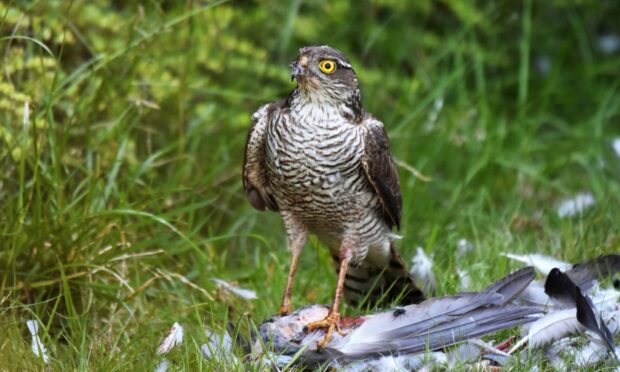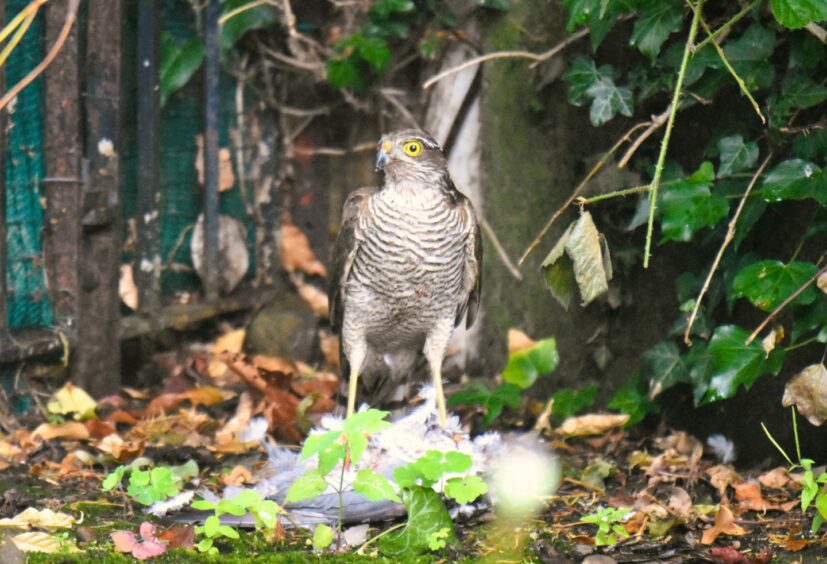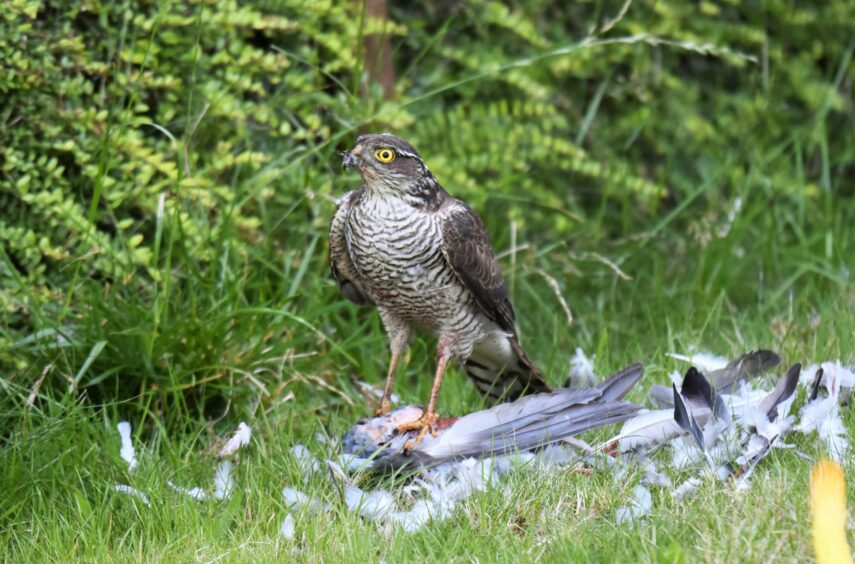A tip-off from a neighbour across the road – a sparrowhawk had just made a kill in her own next door neighbour’s front garden and was busily devouring its prey.
So, I crept across the street and there in the garden stood a female sparrowhawk, with her yellow-taloned legs straddled aside the scattered grey-feathered remains of a wood pigeon.
I backed-off, for she had expended considerable energy in making her capture, and I had no intention of inadvertently scaring her.
Indeed, a sparrowhawk has around a 10% success rate when hunting down prey, and as well as herself, she may also have hungry youngsters to feed.
I examined her from a safe distance through my camera lens – and what a magnificent bird she was with her hooked beak, grey-barred breast and piercing yellow eyes that stared defiantly back at me.
Yes, this classy lady had no intention of abandoning her catch, so I relaxed, and took some photos before quickly departing.
Bizarrely, only a fortnight later the same thing happened again, with the sparrowhawk making another wood pigeon kill, which she brought down and fed upon only several yards away from her previous capture.
Creatures of habit
Sparrowhawks are creatures of habit, and I have noticed before in woodland, finding favoured plucking areas where the hawks habitually take their prey to.
Despite being relatively common, sparrowhawks melt seamlessly into the environment, and over the course of a year I encounter individuals on only a handful of occasions.
One reason for this elusiveness is that rather than habitually soaring high in the sky, sparrowhawks most often fly at low level, skipping over hedgerows and through woodland on fast beating wings in the hope of ambushing a pigeon, blackbird or blue tit.
In my local wood, I sometimes observe a sparrowhawk sitting on a high tree branch at the top of a slope, waiting patiently for the opportune moment, so that it can use the pull of gravity to launch down the incline upon an unsuspecting songbird.
Size difference
One of the most intriguing facets of the sparrowhawk is the size difference between the male and female, with the latter being significantly larger.
This is nature at its most clever, a miracle of evolution that reduces competition between the males and females for food in their territory.
Thus, the male specialises in smaller birds such as tits and finches, whilst the females can focus on blackbirds, thrushes and birds up to the size of a wood pigeon.
I haven’t seen any sign of my local female sparrowhawk over the last week or so, but she is there, living her secret existence by the edge of my town, skirting over nearby farmland and sitting patiently in woodland for an ambush opportunity.
For the pigeons and songbirds, the ever-present threat of attack means alertness is their constant companion.
Sparrowhawks live life in the fast lane, daring and intelligent, and with an independence of spirit that epitomises the true grit and determination of nature.














Conversation